The popular image of the wars of the future mostly includes lasers as the main type of weapon. Military engineers from different countries have been promising for decades that the era of combat use of coherent radiation will come soon. Let’s take a look at how these devices work and whether they can be used to win a space conflict.
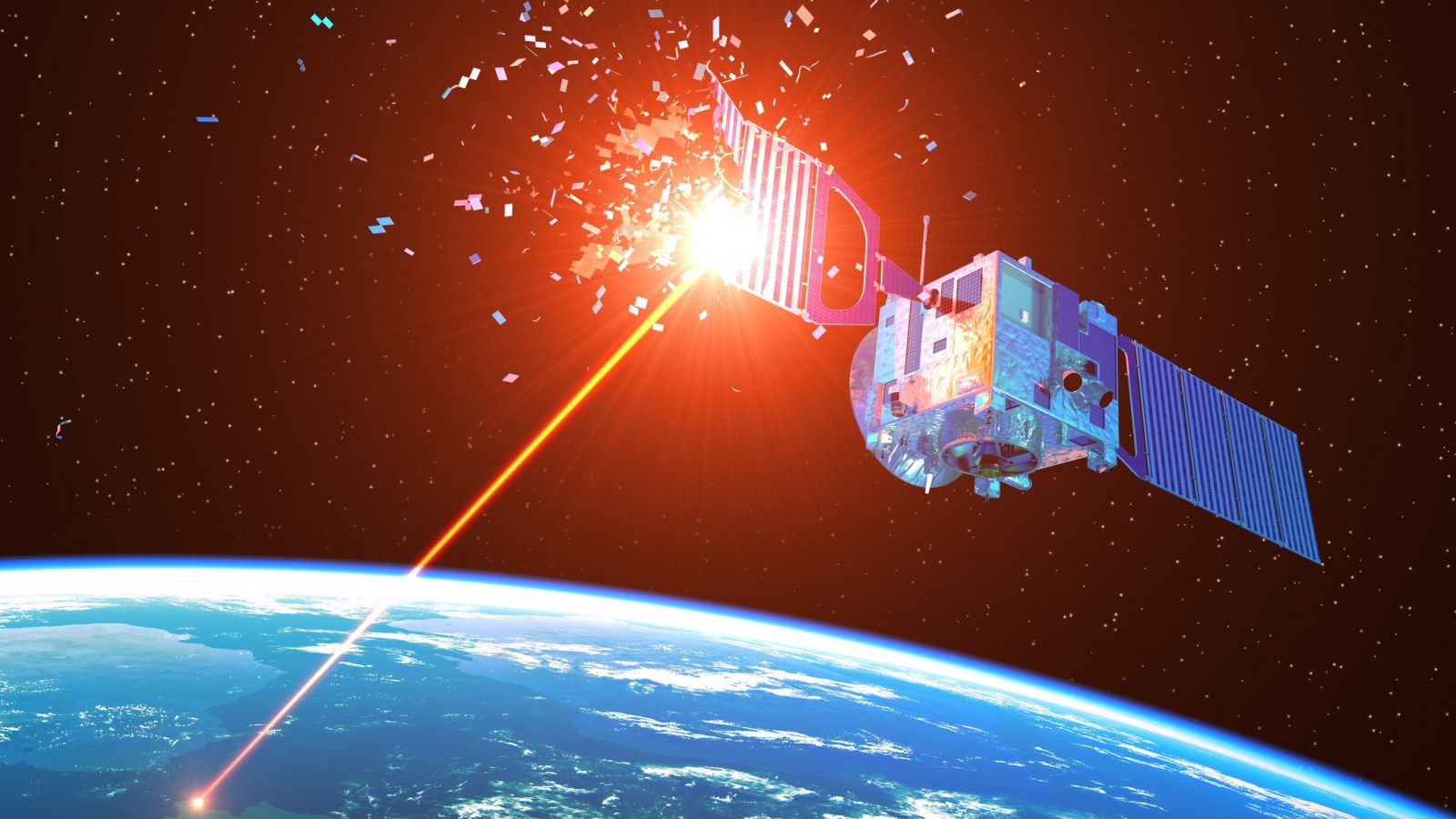
“Death rays”
Lasers as a weapon have long been a staple of science fiction. It was started by one of its founders, H.G. Wells. Although, in his works, they were called “heat rays”, it was quite an accurate description of the essence of the device, which became a reality only a few decades later.

In 1898, when H.G. Wells equipped the Martian tripods with “heat rays” in his War of the Worlds, the idea of a narrow beam of radiation so intense that it could be used as a weapon was something absolutely revolutionary. However, already in 1916, Albert Einstein predicted the existence of stimulated emission. And in 1928, his prediction was confirmed, giving rise to research that led to the realization of science fiction ideas.
The word “laser” was coined in 1960. This is how the American physicist Theodore Maiman named his optical quantum generator. It is an abbreviation for “light amplification by stimulated emission of radiation”.
Physics of laser radiation
The laser is based on the principle of stimulated emission, which was discovered by Einstein. It means that under certain conditions, an atom saturated with energy collides with a photon, but instead of absorbing it, emits a new photon with characteristics identical to the initiating one.
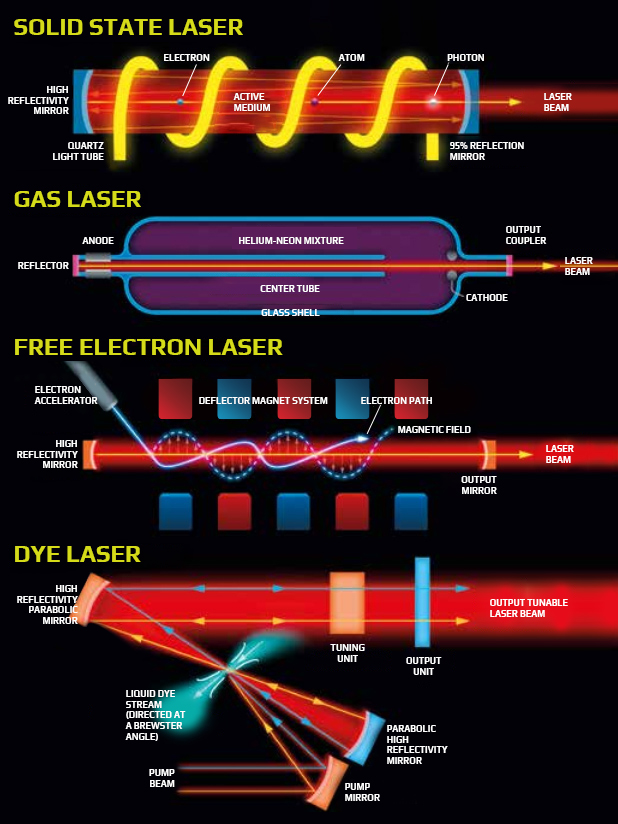
For this to happen stably, it is important that the majority of atoms are in an excited state. In addition, the environment in which the process takes place must be covered with a mirror surface that reflects photons. Thanks to this, their number in the generator will constantly multiply. Then all we need is to leave a single narrow hole for them, which will create a beam of intense radiation.
The main feature of a laser beam is its monochromaticity. Sunlight is a mixture of different wavelengths, and that is why it can be decomposed into a spectrum using a prism. However, an excited medium can efficiently generate photons only with a certain wavelength, which is determined by the type of molecules of the emitting substance and their state.
In the process of amplification, the most common wavelength begins to dominate more and more, resulting in radiation being generated in one very narrow region of the electromagnetic spectrum.
Also, during amplification, photons, each of which is not only a particle but also an electromagnetic wave, become polarized. This means that their vibrations occur in the same plane. Laser radiation is coherent, which means that all photons are polarized in the same way.
Laser design
The polarization of a laser beam allows it to be refracted and reflected accurately and efficiently. That is why auxiliary devices in the form of prisms, mirrors, lenses, and their combinations are usually installed at the output. An example of this is a fiber optic cable, which is essentially an extremely elongated mirror. The flickering of a laser beam in it occurs millions of times and transmits information over enormous distances.
However, it is not so easy to obtain a laser beam with the specified characteristics. The quantum generator itself consists of three main parts: a pumping system, an active medium, and an optical resonator. The design of each of these elements can vary greatly depending on the type of device.
The pumping system is usually some kind of lamp capable of emitting photons, usually a pulsed or arc lamp. However, an electric discharge, another laser, sunlight, a chemical reaction, or even an explosion can also be used in this capacity.
The active medium is actually the atoms that will be initiated by photons and emit their “copies”. It is placed inside the optical resonator. The mirror surface of the latter is selected in such a way that it effectively reflects photons of exactly the length and polarization that needs to be amplified.
Types of lasers
The most important of the three components of each laser is the active medium itself. It determines not only what wavelength the laser will have, but also what pumping source and optical resonator should be used. This medium can be in one of four basic states of matter: solid, liquid, gaseous, and plasma. And it is by the type of active medium that lasers are usually classified.
However, within each of the main types, there are many varieties that are often used as the main technical characteristic of a laser. For example, gas-phase lasers include argon, neon, krypton, nitrogen and other similar lasers, and liquid-phase lasers include lasers with various dyes: coumarin, stilbene, rhodamine.
Solid-state lasers mainly use crystal or glass as an active medium, from which they get their name. The first laser created by Maiman was of this type. Photons were generated inside a ruby.
Finally, there are free-electron lasers. They have no active medium at all — photons are generated in a vacuum. The source of pumping in these devices is a stream of electrons, and the analogue of an optical oscillator is a special set of magnets called an undulator. It makes charged particles oscillate in such a way that they constantly lose energy and emit photons.
Laser as a weapon
The idea of a laser weapon is based on the fact that a laser is a narrow beam of coherent radiation. Unlike the sun’s rays, it is therefore able to remain narrow for a long time (diverging). And when the beam retains a certain diameter, it provides a certain energy density.

The effect of a large amount of light energy concentrated in one place is well demonstrated by an experiment with the Sun, a magnifying glass and any flammable object. Laser weapons are a way to do the same thing, but at a distance of many kilometres.
That is why, from the point of view of physics, a laser cannot cut in the literal sense of the word. It burns, melts, and vaporises material with precision, and only the high accuracy of its action makes it comparable to the process usually used by saws and blades.
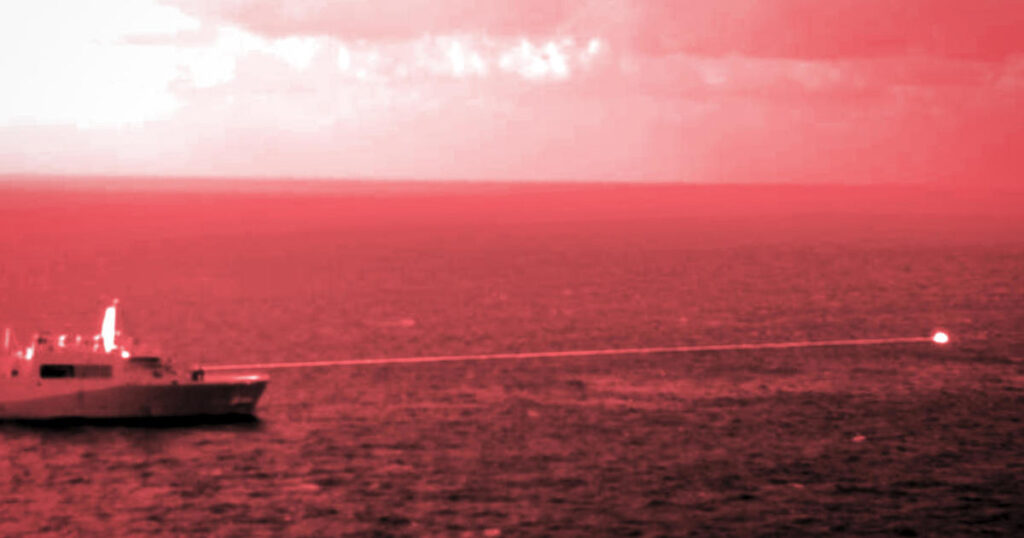
A powerful laser destroyed a target drone in flight during tests conducted by the US Navy
However, it is extremely difficult to ensure that the beam energy density at a distance of tens of kilometres is as high as that of a wooden plank at a distance of 10 cm. Therefore, although laser designs that can physically neutralise enemy vehicles and personnel have existed for a long time, most laser weapons have been designed to use softer methods of impact.
Some laser weapons are designed to ignite flammable objects. A typical example is the Chinese laser rifle ZKZM-500, developed in 2018. It is capable of causing severe burns to the human body, burning tyres of wheeled vehicles, and causing overheating and explosion of fuel tanks.
A large number of lasers developed for the armies of different countries are designed to blind enemy soldiers. In addition to the actual inability to see, it causes psychological damage. However, international agreements significantly limit the power of such devices, which are commonly referred to in the English-language literature as dazzlers: too much radiation threatens to deprive a person of their sight forever. Lower power renders them ineffective at long distances, especially if the enemy is wearing protective goggles.
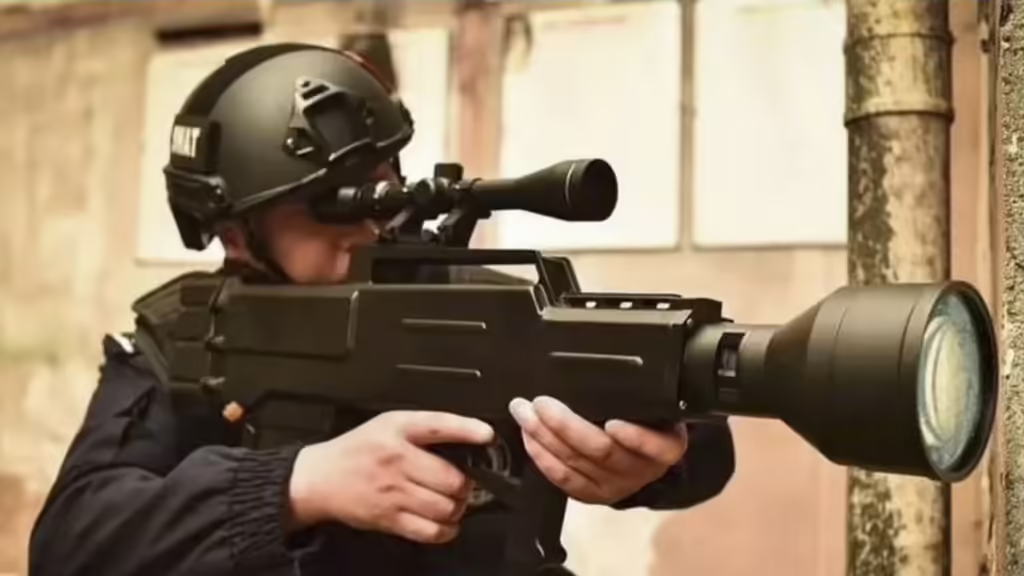
Chinese soldier with a ZKZM-500 laser rifle
Finally, many laser weapons are designed to destroy equipment on enemy vehicles that is sensitive to optical radiation or overheating. Systems designed to neutralise laser guidance heads were once developed in both the USSR and the United States.
Advantages and disadvantages of laser weapons
The main advantage of laser weapons is that the beam propagates at the speed of light. Therefore, there is no need to adjust for the time it takes to travel to the target. And it is almost impossible to evade it in a battle on the surface or in the air.
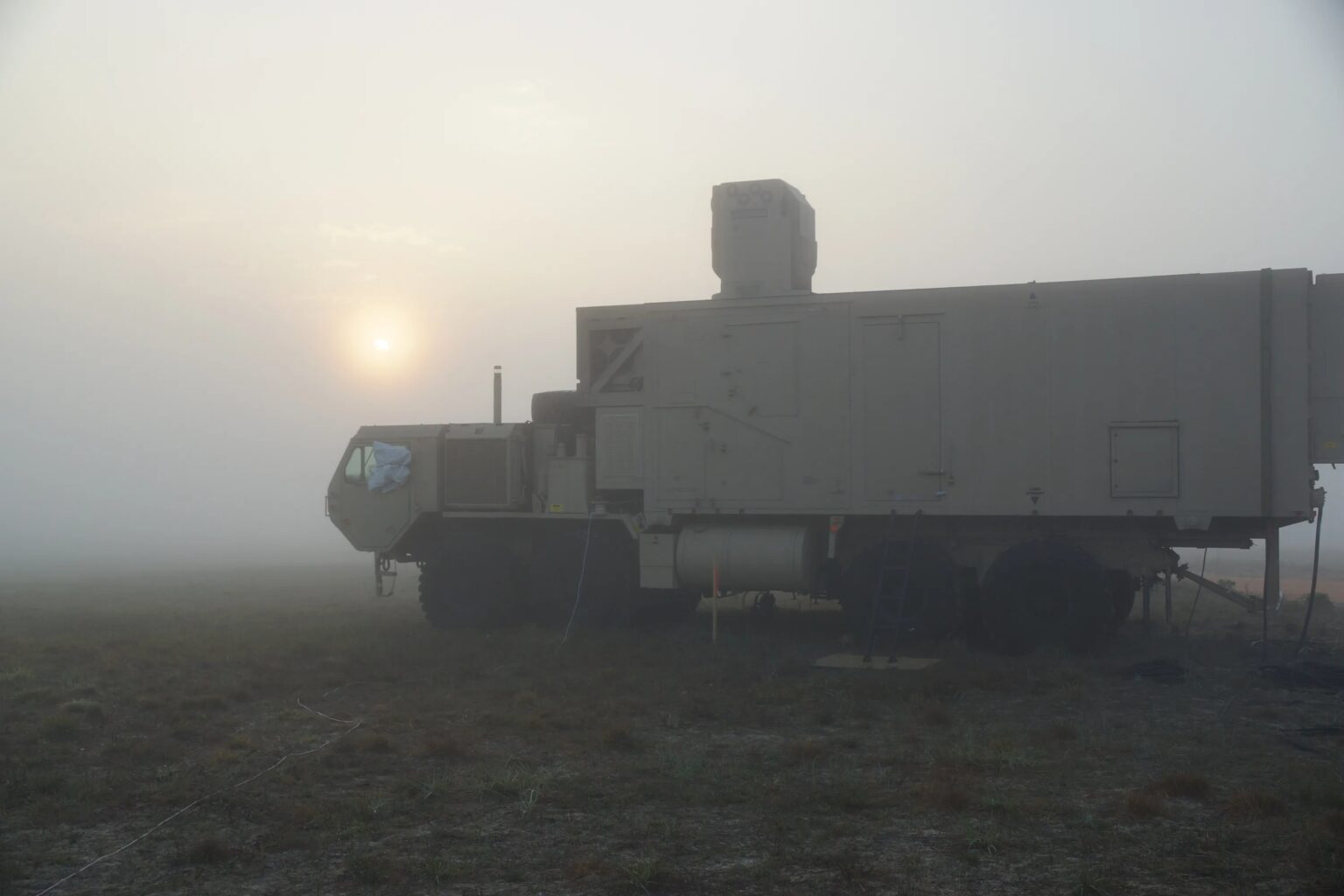
One of the advantages of a laser beam is that gravity has virtually no effect on its accuracy, unlike a bullet. And the recoil from such a weapon is virtually non-existent.
The power of the laser and the diameter of its beam can be easily varied, controlling the method of destruction. In addition, the ammunition in this case is determined solely by the amount of energy.
However, lasers also have significant disadvantages. First of all, it concerns the scattering of the laser beam. The thicker the environment, the more the energy density decreases with distance. Therefore, any fog, smoke, and rain significantly reduce their effectiveness.

Also, in war, direct fire is not always the right way to go. Often, combat operations take place in a complex landscape, so weapons that fire along a plunging trajectory, such as mortars and howitzers, are needed. Lasers have nothing to offer in this regard.
Another big problem is that in order for a laser beam to cause damage to a target, a significant portion of its energy must be absorbed by it. And it can also be scattered and reflected. And the proportions in which these three physical phenomena occur depend not only on the characteristics of the laser but also on the target itself.
Finally, lasers have incredibly high power requirements. A Chinese rifle can be carried by a single soldier only because it is designed to be used only for ignition and only at a short distance. A beam gun capable of melting tank armor and an energy source simply won’t fit on the same tank, unlike a conventional rifled gun.
Projects of combat lasers
Despite all the complexity of implementation, the USSR and the United States spent several decades developing weapons capable of hitting targets with lasers. The Soviet Union implemented the Terra and Omega programs, which aimed to create a system for hitting ballistic missiles with a laser beam. However, in the late 1970s, it became clear that the power of the experimental Terra-3 gas-phase system would not be sufficient for this purpose. Consequently, interest in this topic gradually waned, and in the 1990s the program was finally curtailed.
In addition, the USSR was developing a number of projects for naval and even space-based combat lasers. A large-scale model of the Skif laser platform was launched into space. But in the end, all of these programs ended in the same way as Terra.
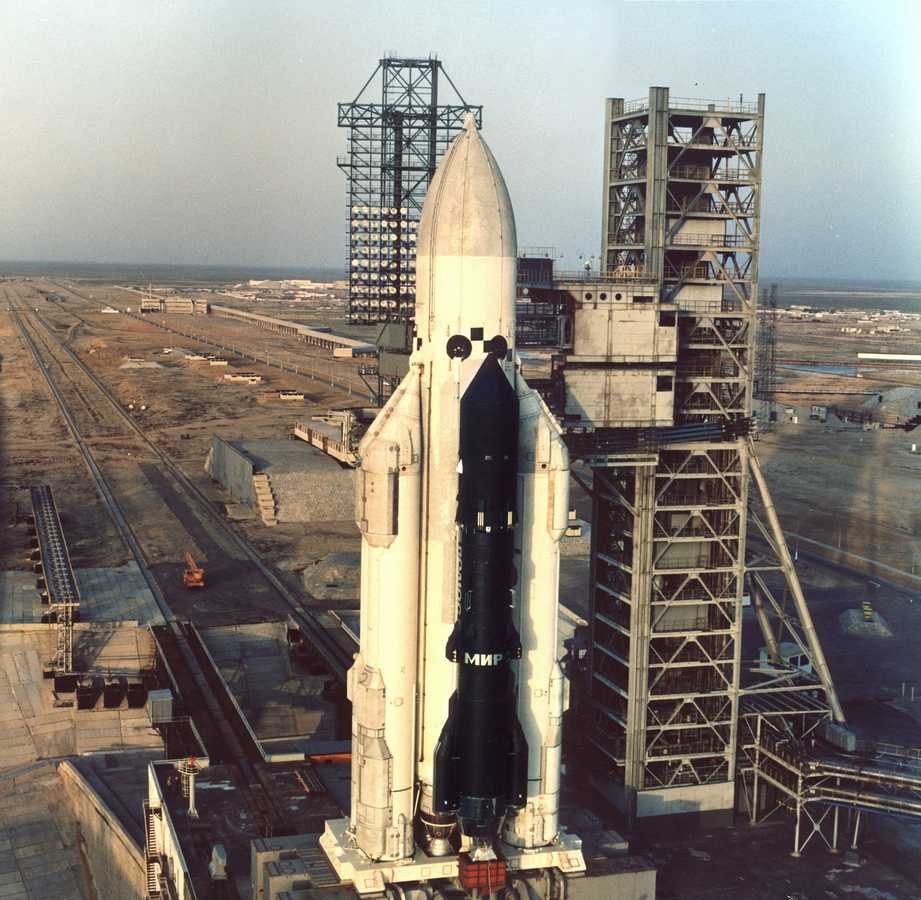
The same happened with the American Excalibur project, which was a key element of the Strategic Defense Initiative program. It was supposed to destroy ballistic missiles using X-ray lasers. Developments in this area appeared in the 1970s, and active development continued throughout the 1980s. But in 1992, the program was finally closed.
Since the early 2000s, Boeing, together with the US Department of Defense, has been developing the Advanced Tactical Laser program. It involved the installation of a 100 kW gas-phase infrared laser on an AC-130 aircraft.

The gun weighing more than 5 tons was designed to hit enemy targets at a distance of up to 20 km. In 2009, successful tests took place, but the program was decided not to continue. The same was done with the Precision Airborne Standoff Directed Energy Weapon, which was being developed in the early 2010s.
But in the 2000s, the United States successfully tested the HLONS system, better known as ZEUS, in Iraq and Afghanistan. It is a 1 kW solid-state laser mounted on a Humvee vehicle that allows for remote demining by causing an explosion using a beam.
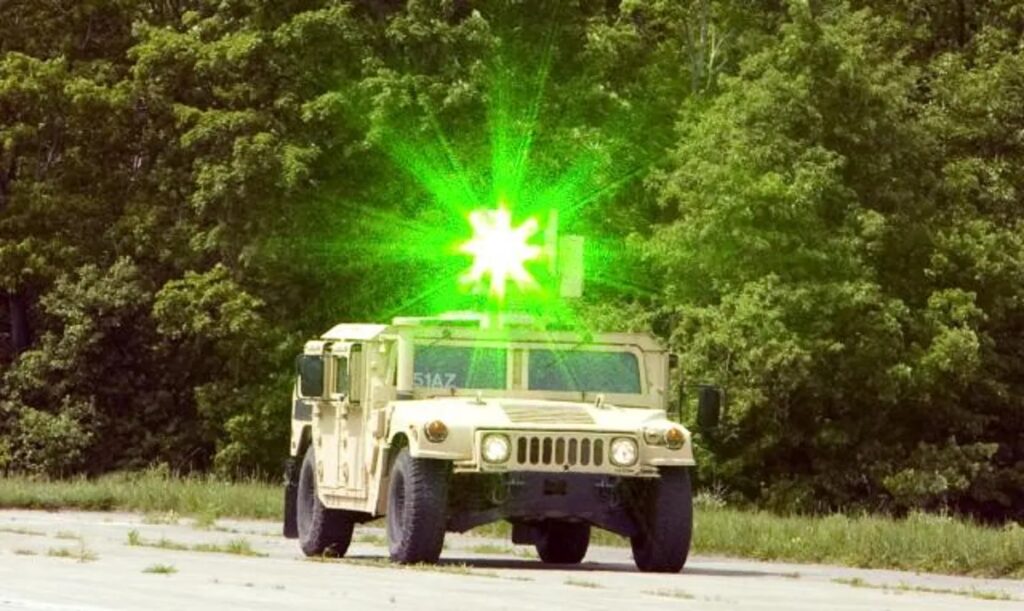
The HLONS (HMMWV Laser Ordnance Neutralisation System) laser, also known as ZEUS, is a solid-state laser system used by the US Army to destroy landmines and unexploded ordnance. It was developed by SPARTA, Inc. and NAVEODTECHDIV (Navy Ordnance Disposal Technology Division) to demonstrate the feasibility of integrating a commercial medium-power solid-state laser with a Humvee (HMMWV) and using it to clear the terrain of surface mines, improvised explosive devices and unexploded ordnance.
In general, at the beginning of the twenty-first century, many countries became interested in the implementation of laser weapons in variants mainly for automotive vehicles. However, despite the large number of experimental models, it has not been widely used on the battlefield.
Lasers in space warfare
When people think of war in space, they often imagine spacecraft firing lasers at each other. At first glance, this assumption seems quite logical. The vast distances involved give laser beams a significant advantage over projectiles, even if the latter are shot by electromagnetic catapults.
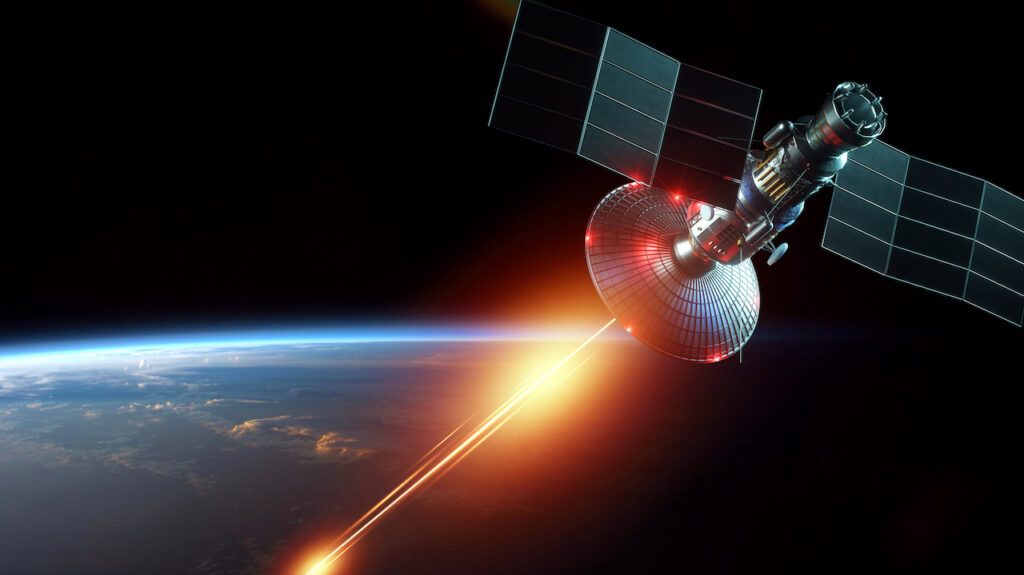
The fact that laser beams are practically unaffected by gravity and do not cause significant recoil further increases their value. Moreover, near massive bodies like the Earth, the trajectories of physical projectiles are so capricious that they can turn into orbits, and they will pose a danger to objects other than those they were fired at.
And a shot from a cannon that gives a projectile high speed transmits the same impulse to the vehicle on which it is mounted. And this can lead not only to uncontrolled rotation of the shooter, but also to a change in its trajectory. There are virtually no such problems with lasers.
However, laser weapons in space have their own drawbacks. Because it is so large, you have to take into account the divergence of the laser beam, which is not due to the resistance of the environment, but only because these are the basic properties of radiation. It is quite possible that a laser hits an enemy vehicle at a distance of hundreds of thousands of kilometres, but its energy is spread over a very large area and cannot even heat the material.
To prevent this, it is worth remembering that lasers are not only of the optical range. And the beam divergence depends on the wavelength. The smaller it is the higher is the frequency. Therefore, violet lasers maintain energy density better than red ones, ultraviolet lasers do it better violet ones. And then, theoretically, the X-ray and gamma ranges can be used.
However, it is possible to solve this problem by focusing the beam with a lens. However, in order to use this method we need to accurately determine the distance to the target. And this also becomes a problem at long distances.
Nevertheless, humanity has already come close to the possibility of massive use of lasers in combat, including in space. We can only hope that this will never be necessary.
